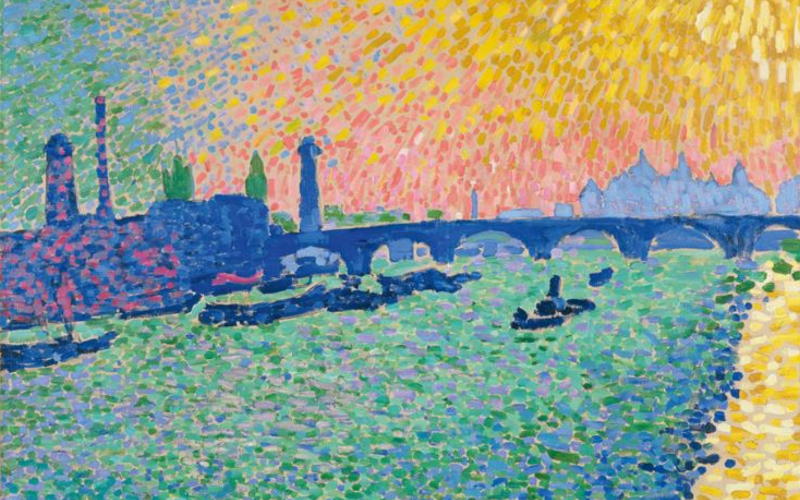Waterloo Bridge (1906) is part of a series of works Derain created while visiting London three times between March 1906 and February 1907.
Ambroise Vollard, a Parisian art dealer, commissioned the London paintings after becoming interested in Derain’s work and eventually purchasing the artist’s entire output in November 1905.
Derain and Henri Matisse were the leaders of Fauvism, a groundbreaking artistic movement that built on the legacy of previous generations of Impressionist and Post-Impressionist artists, at the turn of the twentieth century.
Even though Fauvist artists explored similar themes as the Impressionists, they were innovative in their approach to color – in their paintings, color was used to express emotions as well as capture light and atmosphere.
Derain was enthralled by London and painted a wide range of subjects, including historical sites such as the Palace of Westminster, city parks, and bustling streets. Derain, like his forefathers, the Romantic painter J.M.W Turner and the Impressionist Claude Monet, chose to focus on the river, painting many scenes of the Thames’s banks. Matisse encouraged Derain to visit London’s museums, specifically Turner’s paintings.
Turner’s unfinished paintings, such as The Thames above Waterloo Bridge (ca. 1830-1835) and Norham Castle, Sunrise (ca. 1845), were shown for the first time at the Tate Gallery shortly before his arrival in London. In terms of color, Derain’s London scenes appear to be more akin to Turner’s Venetian paintings than Monet’s views of the city.
About Waterloo Bridge painting
Waterloo Bridge depicts the Waterloo Bridge as seen from the Victoria Embankment. It depicts a hazy view of the Houses of Parliament on the right and the industrial buildings of the Baltic Wharf on the left. The painting’s focal point, however, is the bright blue bridge that serves as the composition’s horizontal line. Waterloo Bridge exemplifies the Fauve spirit, as Derain used pure colors from the tube to create a bright and colorful vision of London. The use of pure colors on a white canvas is reminiscent of Paul Signac’s work and his approach to color in paintings such as Women at the Well (1892).
Waterloo Bridge was painted in a pointillist technique that Derain began using in the summer of 1905, while staying with Matisse in Collioure. The dabs of vibrant greens, blues, and purples create the appearance of a mosaic on the surface.
In comparison to Collioure’s painting Mountains at Collioure (1905), the yellow and blue in Waterloo Bridge are cooler, in keeping with the London atmosphere. While blue, green, and purple dominate the canvas, Derain creates a burst of bright yellow and pink sunlight that erupts from the painting’s top right corner.
The bright light reflects on the water in the lighter dabs of yellow and green. Colors had an expressive function for Fauvists, and Derain described them as “dynamite cartridges whose purpose is to discharge light.” Waterloo Bridge is housed in Madrid’s Thyssen-Bornemisza Museum.


